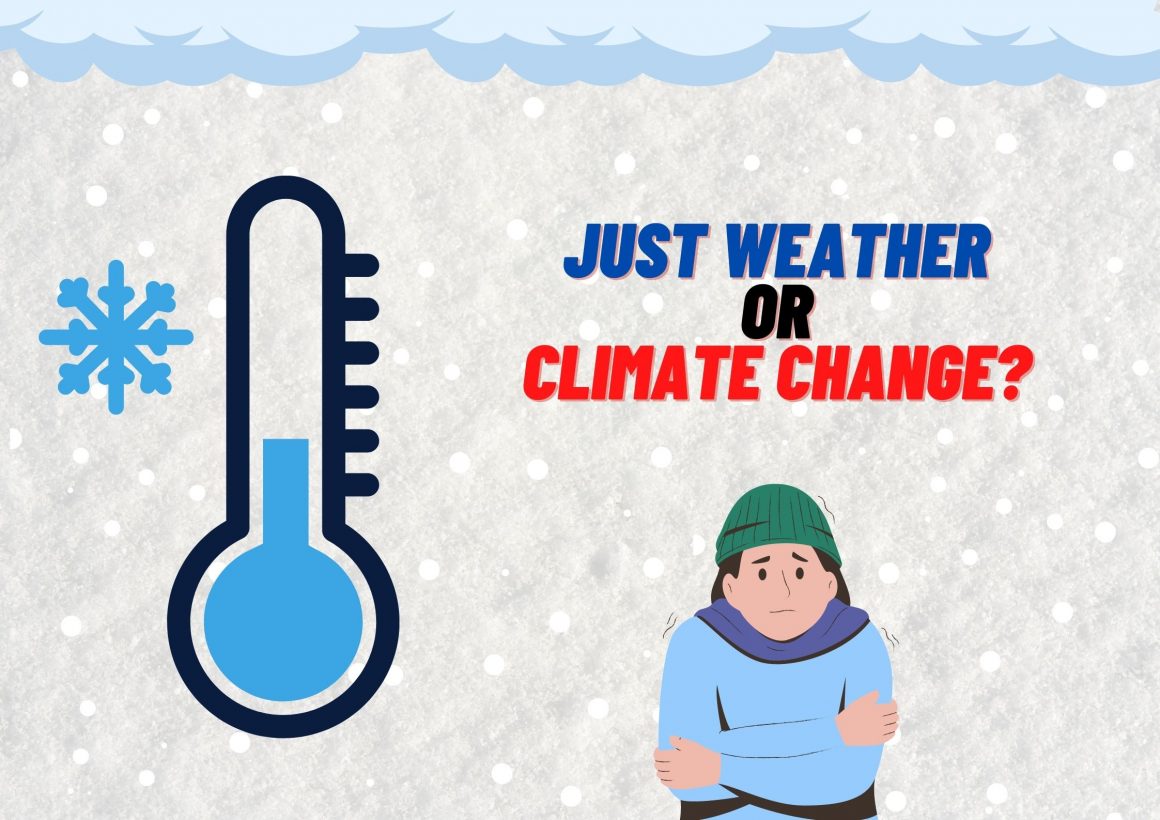
Weather vs. Climate Change: What’s the difference?
By Sophia Lopez, February 14 2023—
The sudden changes in temperature in our city and around the world have sparked discussions about the effects climate change has had on our weather. But there seems to be a misconception of what is categorized as common weather patterns and what is the result of climate change.
University of Calgary associate professor in the department of geoscience, Dr. Rachel Lauer, talks about how this misconception is often more common than we think, and that it fosters some misinformation.
“In general, we can think about the weather as something that is predicted on a daily or weekly basis, and climate is really more of a decadal scale,” she said. “The behaviour of the climate system is something that happens over a much longer timescale.”
While they are far from the same, Lauer clarifies that sometimes the weather and climate change can overlap as a result of human activity.
Lately, regions that don’t usually experience cold snaps such as Dallas, TX, are calling these events “polar vortexes.” This term has travelled even far up north to Calgary, Alta. where extreme weather changes are common enough that a term has been assigned to it for years.
Chinook winds are a part of Calgarian culture — a common occurrence during the winter season most of us are accustomed to now.
A chinook is when warm, dry wind blows over the mountains from the west, according to a CityNews article. This could cause temperature changes of up to 20 degrees Celsius in the winter.
Lauer explains because of the misconception between weather and climate change, people are starting to believe that our chinooks are classified within polar vortexes when this isn’t true.
“We live in a region that experiences massive temperature shifts as a result of chinooks, which are commonly misattributed to climate, when in fact, this is just a function of our position adjacent to the mountains,” she said. “These very rapid temperature increases and subsequent decreases are a result of living at a high elevation.
The misinformation escalated this past December when Calgary experienced extreme cold snaps, with the temperature reaching up to -44 degrees Celsius some days, according to the Calgary Herald. This led many people to believe that what we were experiencing was just as drastic as what people in more southern regions were experiencing.
“I think it’s more alarming when we don’t have cold weather in Calgary,” said Lauer. “We certainly had a rough time in December in terms of an early cold snap, but those temperatures are not unusual for this particular region.
While the weather isn’t something we should be concerned about according to Lauer, considering these are typical weather patterns seen in Alberta, and specifically Calgary, she says that climate change is still something we should be aware of, just not in regards to our winter season.
“My biggest concern for this region is as the average temperature increases, as a result of climate change, things that we rely on like our agriculture, the cattle industry — all of that stress from increasing temperature means higher demand on water and things that we kind of take for granted because of where we live,” she said.
The department of geoscience provides several opportunities for students, both in STEM and not in STEM alike, to learn about what climate change really is and its effects, and what we can do on our part to combat it.
With a course specifically created for non-majors in 2015, Climate Change (GLGY 292) is a class that Lauer feels passionate about teaching, as she wants climate change to be a topic students want to learn about, not feel obligated to.
“[At the time] I was like, ‘I can’t believe there’s no class for non-majors,’” Lauer said.
“The whole course is set up to not scare people — not to scare them with math or science,” she continued. “But to give them the tools they need to have the conversations with their parents, their friends. I think of it as being a citizen scientist, we want everyone to vote, we want everyone to understand what is and is not climate change, and what they can do.”
Lauer talks about changes happening within the department itself, with the intention of modernizing the curriculum and teaching students about issues going on right now. She hopes that students start to feel like their concerns are being heard.
“Part of the reason we’re changing our department — we know students want to solve problems, they don’t want to be the problem.”
